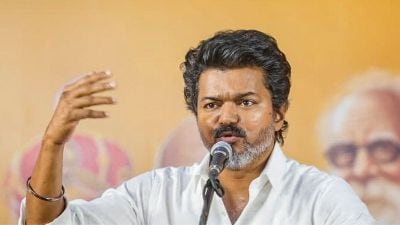The third way lies on the Left
Copulsion rather than ambition is propelling the CPM to embark on a politically hazardous venture — the creation of a “viable”...

Copulsion rather than ambition is propelling the CPM to embark on a politically hazardous venture — the creation of a “viable” third front, preferably within the next three years. The risk of remaining in static equilibrium is obviously greater than the risk of crafting a coalition that represents a permanent collective will, for the CPM has probably calculated that it cannot sit on its laurels, having won the “war of position”, which was not a victory hard won, but the outcome of a “synthetic explosion” that abruptly removed certain obstacles, namely the BJP and its NDA. The Left’s massive haul of 61 seats in the 2004 general elections, in which the CPM’s tally was 42, catapulted it to a position of responsibility.
The Left’s discomforts have increased since May 2004, because it has been compelled by the logic of its own argument, of defeating communal forces, to support the Congress, despite the “struggle between the two approaches,” which has resulted in a series of battles over FDI, privatisation, pension funds and telecom. It seeks to pursue an independent role, which is an exhausting combination of protest and participation — which, it probably anticipates, would ultimately destroy its credibility and damage its chances of growing beyond the local politics of West Bengal-Tripura-Kerala. CPM’s “dependence” on the Congress, as Jyoti Basu described it, is not so much galling as politically dangerous; if the Left makes no attempt to determinedly break out of the political impasse, it could end up making a historic blunder bigger than rejecting the prime ministership in 1996.
Realisation seems to have belatedly dawned, between the finalisation of the draft political resolution in January for the 18th party congress and its adoption in April, that the CPM needs to make a serious bid to break out of the junior league in Indian politics and learn to play like the big boys. For the Left cannot languish in what Gramsci described as the “intermediary stage” in which it has managed to affirm itself since 1977.
For two reasons the Left needs to move on. First, coalition politics is likely to continue; and second, it would be politically foolish to think that the poor, socially and economically vulnerable that the Left claims are its natural constituency are passive. If the Left hangs around as an outside force waiting for a suitable coalition to support, it will end up marginalised. The argument that the BJP is communal, the Congress secular but representative of big bourgeoisie-big landlords, leaves a large space, hitherto represented by uncoordinated caste-based parties and the Left. Since the CPM is unequivocal in its stand on the Congress which it has “basic differences” of “class character” and the path that the Congress has chosen on development, it has to either find its own buddies and represent a viable third force in Indian politics or it will have to work out an arrangement, long-term, of how it would like to work with the least of the baddies.
The odds that it is up against are formidable because the party is quantitatively small in most parts of the country and qualitatively weak, for it does not have capable leaders to help in its transformation from a practically regional party into a national formation. Following its rethink on the caste-class question, the CPM as the biggest of the Left parties will have to give the lead on initiating struggles that centre on social discrimination rather than economic issues. Given the evolution of caste-based political parties, the CPM will need to build allies from within these groups. Having argued that five decades of bourgeois landlord rule has led to the erosion not only of secular values but injected a degree of unprincipled opportunism in many of the non-Left parties, the CPM’s dilemma is certainly excruciating. Either it will have to tutor its current and potential allies — that is, the smaller non-Left political parties — in “value-based politics” or it will have to circumvent the problem by building bridges with civil society groups.
In both or either event, the CPM will have to work hard on responding to local issues and developing a tactics of local struggles. The risk in doing so is enormous, for the criss-cross of local networks requires sensitive and skilled management. Neither ideas nor opinions are spontaneously born; there has to be a centre of formation, of irradiation, of dissemination and of persuasion that then becomes current reality. Given the enormity of the task, since the CPM has not been specific about the areas in which it intends doing its homework, the three-year deadline for building a “viable third alternative” seems unrealistic. If the CPM-led Left demonstrates its skills in identifying local issues, building local struggles in three years, it will have succeeded in staking its claim to the third and empty space in Indian politics.








- 01
- 02
- 03
- 04
- 05























